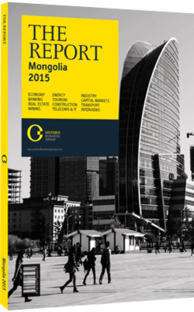New and updated legislation provides clearer guidelines for investors in Mongolia's energy sector
Eager to expand exploration in both traditional hydrocarbons and unconventional fossil fuels like oil shale and coal bed methane (CBM), Mongolia’s parliament overhauled the existing 1991 framework with a new Petroleum Law in July 2014. Significantly easing terms for exploration, the new rules have created much-needed clarity in applying for production-sharing contracts (PSCs) and established competitive fiscal terms. An underexplored frontier play, the hope is that significant new finds in Mongolia will justify the development of infrastructure for transport and refining capacity.
Licensing
The law is most significant in incentivising exploration terms and expanding the Petroleum Authority of Mongolia’s (PAM) remit over a broader range of resources. The law simplifies the PSC application process, with clear timeframes for approval from the Cabinet and PAM (180 days), although not by the tripartite National Security Council (NSC). The NSC’s veto power over PSCs has held up past deals. Licences were also extended from five years to eight (up to 12 with extensions) for exploration, and from 20 years to 25 (up to 35) for production, while a new category for oil shale was created with terms of 10 years (up to 15). Geological surveying is also now recognised, with preferential treatment granted for early investors in geological surveying in bidding for licences. The aim is to establish Mongolia’s first petroleum survey database.
Meanwhile, the Petroleum and Minerals Laws, passed concurrently, require coal miners to report any CBM to PAM for evaluation. The authority’s new statutory rights empower it to repossess blocks where investment thresholds are not met, but it also requires competitive bidding for licences where PSC terms were not agreed with government.
Fiscal Term
Key fiscal terms are also clarified with set ranges for royalties, cost-recovery and other fees. Negotiated as part of the PSC, effective royalties on producing blocks have progressively increased – although Block 19, signed in 1993, is not subject to royalty. Blocks 21 and 97 pay 7.5% royalty, while all others pay 13.5%, according to PAM. The law sets royalties in the range of 5-15%, depending on the type of hydrocarbons and PSC negotiations. Annual licensing fees of $3 per sq km for exploration ($8 for renewals) and $100 per sq km for production licences ($200 for renewals) remain competitive, according to law firm DLA Piper.
While each PSC will vary, they require the licence holder to bear all costs during exploration and to use 40% of oil once production starts to recover all costs. Licence holders for unconventional oil like shale benefit from preferential treatment and can use up to 100% of production to recover their (likely higher) costs, while their royalties are set in the 5-10% range. After royalties are levied on the remaining 60%, the remaining profit-oil is usually split 40:60 between government and investor, with royalties and other taxes deducted from the latter’s share. “There is some concern that the 40% cap on annual cost recovery for conventional oil could make smaller fields uneconomical to develop,” Michael Jonas, executive vice-president of oil shale explorer Genie Oil & Gas, told OBG.
Impact
A slew of bylaws passed by the Ministry of Mining, Ministry of Energy and PAM are also being issued, including model PSCs, contractor selection criteria and oil reporting standards. While the new laws are broadly welcomed by investors eagerly awaiting guidelines, there has been some concern over Article 38, which allows the government to mobilise oil infrastructure in a state of emergency. The article requires fair compensation, but the definition of emergency and the valuations used for compensation are vague.
However, Mongolia now boasts the most favourable fiscal terms for producers with reserve levels similar to Gabon and Colombia, which all have 2bn-2.5bn barrels, according to energy research firm GlobalData. While the lack of infrastructure sets a high bar for projects, the government expects exploration to yield finds that would justify investing in transport infrastructure and refining capacity. In the near term Mongolia’s upstream framework remains competitive for such frontier oil.
You have reached the limit of premium articles you can view for free.
Choose from the options below to purchase print or digital editions of our Reports. You can also purchase a website subscription giving you unlimited access to all of our Reports online for 12 months.
If you have already purchased this Report or have a website subscription, please login to continue.

